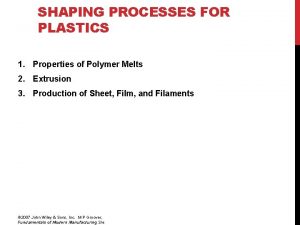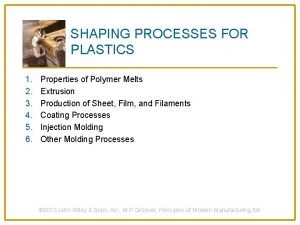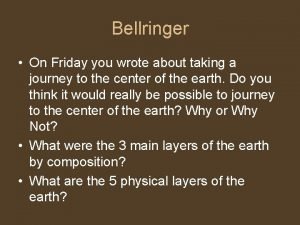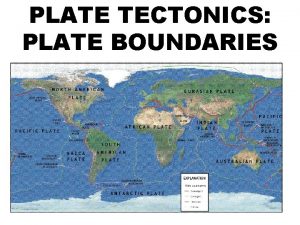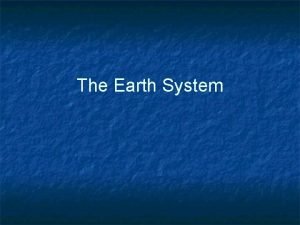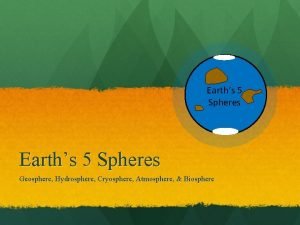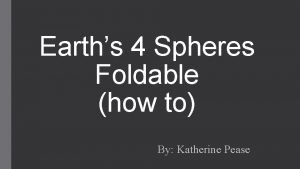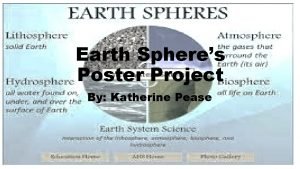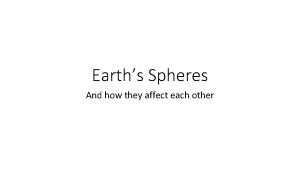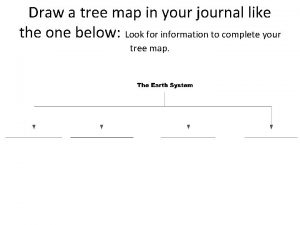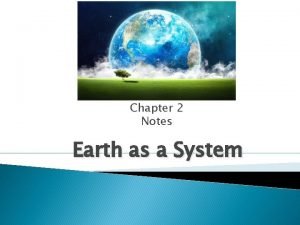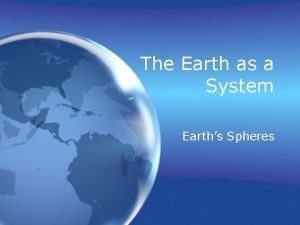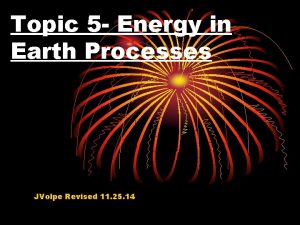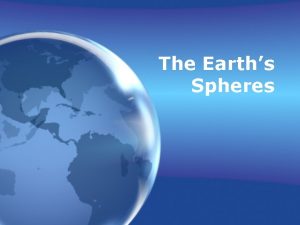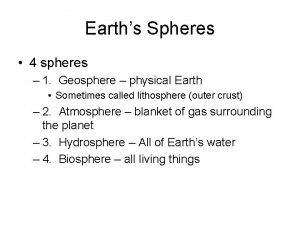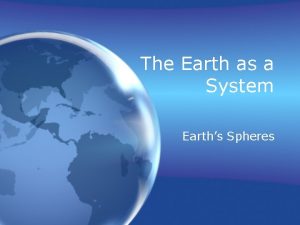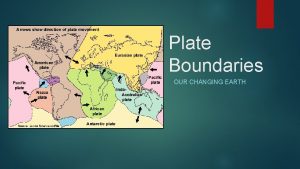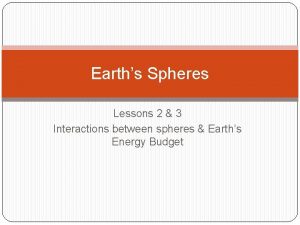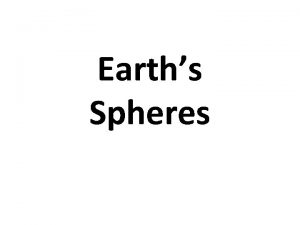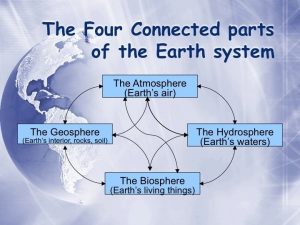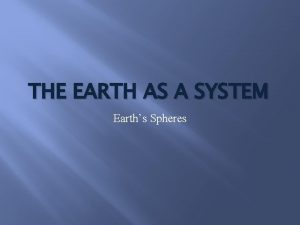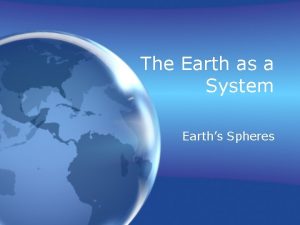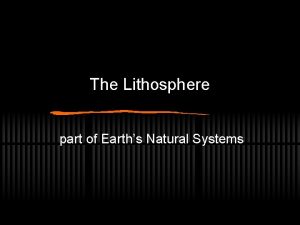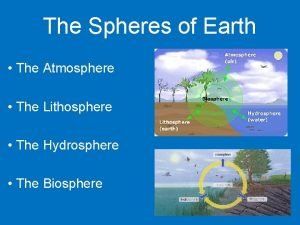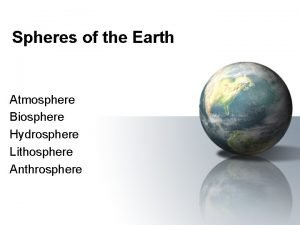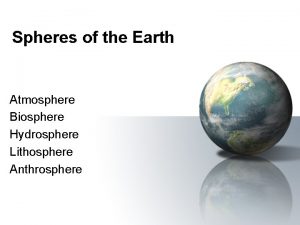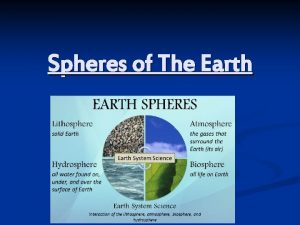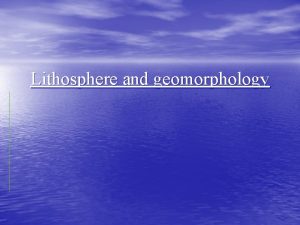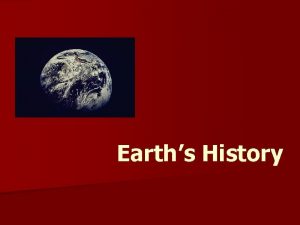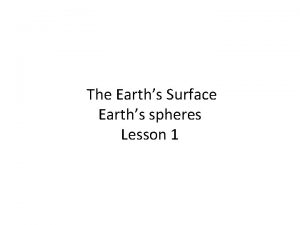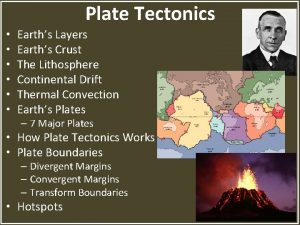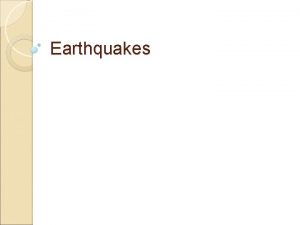Lithosphere PROCESSES SHAPING EARTH Earths Systems spheres Lithosphere


























- Slides: 26

Lithosphere PROCESSES SHAPING EARTH

Earth’s Systems (spheres) �Lithosphere - Earth’s crust and upper mantle �Atmosphere - Layers of gases surrounding Earth �Biosphere - Living organisms on Earth �Hydrosphere - Earth’s water

Structure of the Earth �The Earth is made up of 3 main layers: Core (inner/outer) Mantle Crust Mantle Outer core Inner core Crust

The Crust �The outermost layer - where we live! �There are 2 types of crust: continental and oceanic Continental crust: � Thick (10 -70 km) � Buoyant (it “floats” – less dense than oceanic crust � Mostly old Oceanic � Thin (~7 km) � Dense (sinks under continental crust) � young

The Mantle �Region of hot, dense rock �Upper portion of it is solid �Deeper under the surface, rock becomes semi-solid or plastic �Convection takes place in the mantle

Convection �is the transfer of heat by the movement of the heated parts of a liquid or gas. �hotter, less dense material rises �cooler, denser material sinks under the influence of gravity


Plate Tectonics �Earth’s crust is divided into 12 major plates which move in various directions �This plate motion causes them to collide, pull apart, or scrape against each other. �They move a few centimeters each year. �Each type of interaction causes a characteristic set of Earth structures, or “tectonic” features. Plate tectonics = Plate Interactions

The Core �Deepest and hottest layer, divided into inner and outer core �Made of mostly nickel and iron �Inner core is solid, outer is liquid


Continental Drift �Alfred Wegener’s theory: Earth was once a supercontinent Over time, the continent split into plates that move �Evidence: Current layout of the continents – “puzzle pieces” Fossils – plants and animals found in non-native places

How do you think today’s continents were once joined?

Plate Boundaries �Convection leads to plate tectonic movement � 3 different types of boundaries result: Divergent Convergent Transform

Convergent Boundaries �Boundaries between 2 plates that are colliding, can be: Continent-continent collision Continent-oceanic crust collision

Continent-Continent Collision �Forms mountains, ex: Alps, Himalayas

Continent-Oceanic Crust Collision �Oceanic crust (more dense) will sink under continental crust (more buoyant); called subduction �Subduction is a way of recycling the oceanic crust �Can result in the creation of volcanoes and mountains

Divergent Boundaries �Boundaries between 2 plates that are moving apart or rifting �Can form in the middle of continents or on the ocean floor (seafloor spreading) �Creates rift valleys and causes volcanic activity


Iceland: An example of continental rifting


The Great Rift Valley: Africa


Transform Boundaries �Boundary between 2 plates that are sliding past one another

Transform boundary: San Andreas Fault

Pacific Ring of Fire �Area of the Pacific ocean where a large number of earthquakes and volcanic eruptions occur

Earthquake Patterns
 4 spheres of the earth
4 spheres of the earth Characteristics of polymers
Characteristics of polymers Shaping processes for plastics
Shaping processes for plastics Lithosphere, asthenosphere, mesosphere
Lithosphere, asthenosphere, mesosphere What layers of earth make up the lithosphere
What layers of earth make up the lithosphere 3.how can you compare the terrarium to an earth system
3.how can you compare the terrarium to an earth system What are the four spheres of the earth
What are the four spheres of the earth Cryosphere hydrosphere biosphere geosphere and atmosphere
Cryosphere hydrosphere biosphere geosphere and atmosphere Earth's spheres foldable
Earth's spheres foldable Hydrosphere poster making
Hydrosphere poster making How do earth's spheres interact
How do earth's spheres interact What are the four spheres of the earth
What are the four spheres of the earth Earth's spheres
Earth's spheres Hydrosphere drawing
Hydrosphere drawing Earth's spheres foldable
Earth's spheres foldable Geosphere
Geosphere Spheres of the earth diagram
Spheres of the earth diagram Concurrent processes are processes that
Concurrent processes are processes that Parts of a transverse wave
Parts of a transverse wave The earths layer foldable
The earths layer foldable Earths roation
Earths roation Whats a natural satellite
Whats a natural satellite Earths biomes
Earths biomes Chalogen elements
Chalogen elements How thick is the earths crust
How thick is the earths crust Whats earths moon called
Whats earths moon called Earth's thickest layer
Earth's thickest layer

